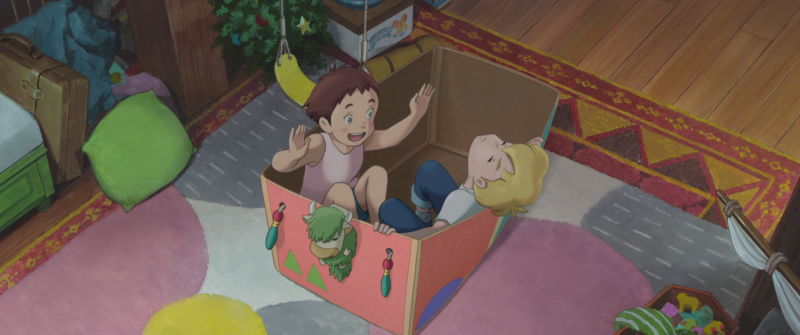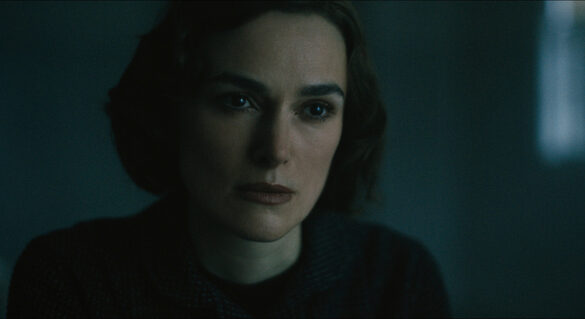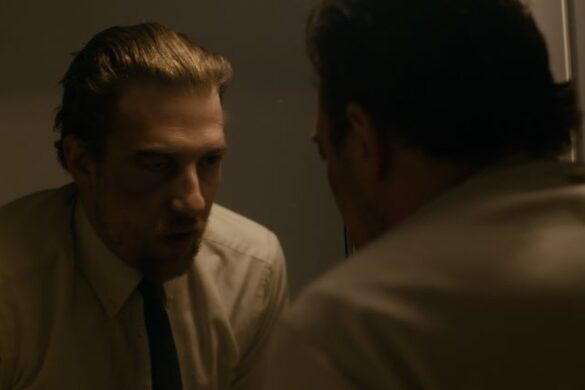Studio Ponoc’s dreamy animation “The Imaginary” is set to debut July 5 on Netflix. Directed by Yoshiyuki Momose and written and produced by Yoshiaki Nishimura, the film narrates the tale of an imaginary character named Rudger, envisioned by a young girl named Amanda in a time of need. The meticulously hand-drawn animation and the storyline, is based on the award-winning novel by author and poet A.F. Harrold. I had the opportunity to screen the film at Netflix and listen to a Q&A session with producer Nishimura who shared insights on the film. Having watched the film “The Imaginary” for the second time, my love and appreciation for the film has only grown stronger!

How it began-
Nishimura discovered A.F. Harrold’s work, “The Imaginary,” about 6 years ago. The work was translated into Japanese and he found it to be a truly unique and special story. He found the challenge of telling the story from the perspective of an imaginary character quite intriguing. While many animations feature encounters between individuals from different worlds or with imaginary beings, such as “My Neighbor Totoro,” this story stands out as it unfolds through the eyes of the imaginary friend, Rudger. Nishimura considered it a unique task to create an animated film from this particular perspective.
English backdrop-
Nishimura chose to keep the story set in England as the concept of an imaginary friend isn’t as widely understood or known in Japan. He explained that in Japan, people are more familiar with ghosts and Yōkai from old folk tales and fairy tales, so setting the film in Japan might be confusing. Instead, he wanted to ensure that Rudger, the imaginary friend, was an integral part of Amanda’s inner world, which is why he decided to place the story in England. It was important for to convey that Rudger was not like ghosts or spirits in Japanese tales, but a unique character in his own right.
Dual Roles–
Continuing with the point that Rudger is not a ghost or spirit, film producer Nishimura had to convince Director Yoskiyuki Momose, that the concept of the imaginary friend would make a good film. Nishimura started this by writing a four page synopsis, which ended up turning into a 40 page treatment with detailed descriptions of the camera work, sets, and music intertwined into the story. When Mr. Momose saw this, he suggested that Nishimura should turn it into a full screenplay.
Studio Ghibli influence-
Nishimura and Momose are seasoned veterans of Studio Ghibli. Working with Hayao Miyazaki and Isao Takahata influenced his approach to the film. Nishimura spent about 10 years working with Mr. Takahata, starting in his late twenties. Nishimura shared that Takahata taught him a great deal about filmmaking, art, music, architecture, literature, and more. One common thread among Mr. Miyazaki, Mr. Takahata, and Nishimura is the belief that films for children should also resonate with adults. This philosophy guided him as he worked on this film.
Possion du Rouge
Studio Ponoc collaborated with the French studio Poisson du Rouge, despite the challenges of time differences, language barriers, and cultural distinctions, they were determined to create a unique animation style. This style incorporated more texture and light and shadow in the characters themselves. The technology provided by the studio allowed Studio Ponoc to achieve this effect more efficiently with more than 1400 hand drawn drawings that were used in the film., and although it was a challenge to implement changes mid-production, their shared enthusiasm and determination pushed both studios to make it a reality.

Voice Casting
When it comes to hand drawn and hand painted animation, the actors voices need to be just right to bring the characters to life. Unlike computer graphics or stop motion, studios are dealing with hand drawn characters that require real voices to make them seem authentic. It’s crucial to cast the right voices for the roles in order to create a believable world. In “The Imaginary”, depicting an imaginary world, the actors were able to truly embody this world and make it feel real. Finding natural performances, especially with a younger cast, can be challenging, but it’s essential for the characters to feel authentic. In both the English and Japanese versions, the actors did a fantastic job bringing the story to life.
What’s Next
Studio Ponoc’s future involves telling new expressive stories that resonate with people’s lives today. They aim for unpredictability in creating animation films, symbolizing a new beginning bridging Studio Ghibli and Studio Ponoc.

(Left to right) Tee Burges with Evie Kiszel voice of Amanda and Selena Hughes. Moderator Charles Solomon and Yoshiaki Nishumra at Tudum Theater. Yoshiaki Nishumura with Tee Burgess.











